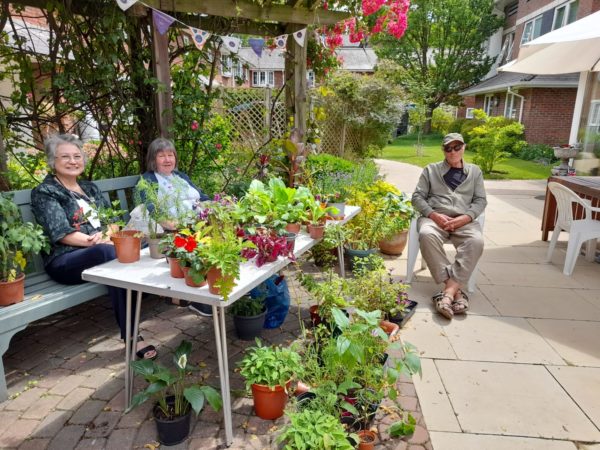Gardening for the planet
Held on April 22nd every year, Earth Day mobilises people across the globe to take action to protect our shared planet.
 There are so many ways that every one of us can take action, from choosing locally produced food, to reducing waste and sowing wildflower seeds.
There are so many ways that every one of us can take action, from choosing locally produced food, to reducing waste and sowing wildflower seeds.
At Hammersmith United Charities, we’re fortunate enough to care for two award-winning gardens at our almshouses. The gardens are managed by a team of three gardeners – Victoria (known to most residents as V), India and Lucy. Many of our almshouse residents are also keen gardeners so often support V and the team with tasks such as deadheading, watering and sowing seeds.
V says, “We’re always trying to think about the planet and how we can support wildlife in the almshouse gardens.”
If you have space to grow plants, whether in a garden, on a balcony or in your home, here are a few tips for growing with the planet in mind.
Compost your food waste
Producing your own compost from garden and food waste both helps to reduce that waste and also reduces the need for buying plastic-bagged compost.
V shares, “We compost the majority of our garden waste on site. We have a large compost bay for each garden. We also have a Bokashi composting bin in each shared kitchen. Every layer of food waste is added to with a layer of Bokashi bran, which speeds up the fermentation process. Once the bin is full, the waste gets added to the compost bay.
“All the compost we generate is used as a mulch for our flower beds. The residents can also help themselves to it for their own garden areas or pots.”
Conserve water
Mulching the beds helps to improve the soil quality and also reduces the need for watering as it helps the soil to hold onto moisture. UK summers are expected to become hotter and drier as our climate changes. Reducing the need for watering and increasing the use of rainwater will become more and more important.
V shares, “Lucy, India and I recently went to a networking day at Kew Gardens. Water was the big topic of the day, and we’re trying to be more ‘water-wise’ at the almshouse gardens. For instance, we used to keep some small trees in large pots but have planted them in the ground instead, so they now need much less watering. We’re also currently looking at how we can utilise any overflow from our water butts, perhaps by connecting them to a planter or water feature.”
When choosing new plants for the gardens, V considers how well they can cope with rising temperatures and periods of drought. However, as she explains, “It’s more complex than just considering drought tolerance, because we now have extremes of winter downpours and much hotter, drier spells in summer. So, we need to be thinking in terms of plants that can cope with both extremes.”

Plant for pollinators
More than half of UK butterfly species are in long-term decline, and pollinating insects in general are struggling. One of the main issues is habitat loss, so planting pollinator-friendly plants is crucial. Anyone with even a small amount of outdoor space can play their part, as you don’t need to rely on large shrubs to attract bees and butterflies.
V says, “We had a huge buddleia that was taking up too much space and overhanging the walkway, so we had it removed. Buddleias are beloved by butterflies, so we’ve replaced it with several other pollinator-friendly plants. We grew some of these from seed, such as Lepechinia hastata, bought new plants including Scabiosa ‘Butterfly Blue’ and were given several hardy geraniums by the residents.”
Consider local wildlife
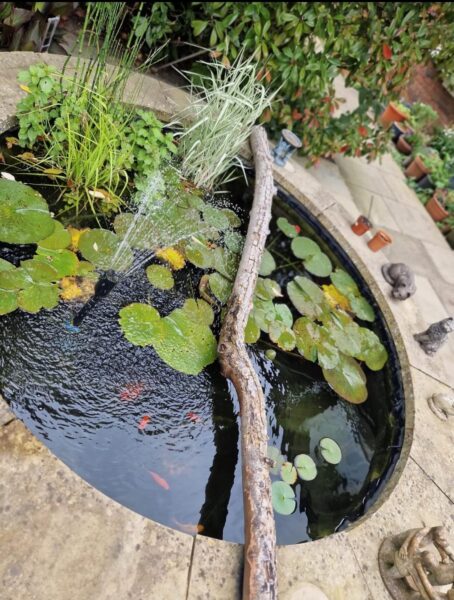 Offering easily accessible water is an easy way to support local wildlife, including birds and hedgehogs.
Offering easily accessible water is an easy way to support local wildlife, including birds and hedgehogs.
Our Sycamore garden already has a pond and the gardening team is considering creating a water feature in the John Betts garden. However, you don’t need to have a large garden to help wildlife, as even a shallow dish of water on a balcony will be appreciated by the birds.
V shares, “We get dragonflies around the pond at Sycamore House and I’ve seen the hummingbird hawk moth at both sites. We don’t have bird feeders up, but we try to create natural food sources through our planting. As a result, we have a lot of common garden birds, such as sparrows, robins, wrens and blackbirds, as well as the Eurasian jay. One resident even saw a heron here!”
Get involved with nationwide initiatives
Nationwide events, such as the Big Garden Birdwatch (January) and the Big Butterfly Count (18th July – 10th August) are crucial in helping charities to monitor different species. Many of our residents and staff members take part in both events.
If you have a couple of hours spare a month, you could also register to be a Bee Walker and count the number of bees you see on a set walk each month.
Find out more
- For more information on Earth Day, visit: earthday.org/earth-day-2025
- The RSPB has a wealth of information about wildlife-friendly gardening. You can also find advice on the Wildlife Trusts and RHS





 Wendell Park Primary School has been offering art therapy to pupils in need for almost a decade. The one-to-one sessions are led by Karissa Patel, an art psychotherapist.
Wendell Park Primary School has been offering art therapy to pupils in need for almost a decade. The one-to-one sessions are led by Karissa Patel, an art psychotherapist. As Karissa explains, “Art therapy uses creative processes to help the child to express and explore their thoughts, feelings and experiences, and to understand how their experiences affect everyday connections. It’s a non-judgmental, non-threatening space where the child can figure out who they are and learn to be more compassionate towards themselves.
As Karissa explains, “Art therapy uses creative processes to help the child to express and explore their thoughts, feelings and experiences, and to understand how their experiences affect everyday connections. It’s a non-judgmental, non-threatening space where the child can figure out who they are and learn to be more compassionate towards themselves.

 “Spirit is about the things that enable people to live life in all its fullness – art, football, 10-pin bowling, and trips to museums, the theatre and Brighton, for instance. Enabling people to have a fuller life is particularly important for rough sleepers, because if you’re a male rough sleeper, your life expectancy is just 43.
“Spirit is about the things that enable people to live life in all its fullness – art, football, 10-pin bowling, and trips to museums, the theatre and Brighton, for instance. Enabling people to have a fuller life is particularly important for rough sleepers, because if you’re a male rough sleeper, your life expectancy is just 43. Barons Court Project sells greetings cards and gifts featuring artwork by some of its guests. The money raised is split between the artist and the charity. Michael shares, “HomeLess Made started as a lockdown project. When I first suggested it to our guests, they said ‘Our art isn’t good enough. We are not good enough.’ The project has helped to show them that their art is good enough, and that they are good enough and they deserve this. We’ve seen the artists increase in confidence, self-esteem and dignity.”
Barons Court Project sells greetings cards and gifts featuring artwork by some of its guests. The money raised is split between the artist and the charity. Michael shares, “HomeLess Made started as a lockdown project. When I first suggested it to our guests, they said ‘Our art isn’t good enough. We are not good enough.’ The project has helped to show them that their art is good enough, and that they are good enough and they deserve this. We’ve seen the artists increase in confidence, self-esteem and dignity.”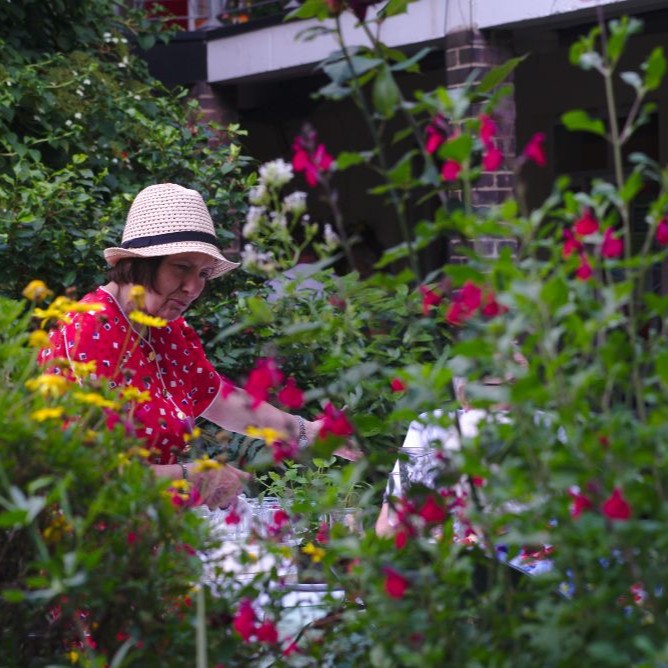
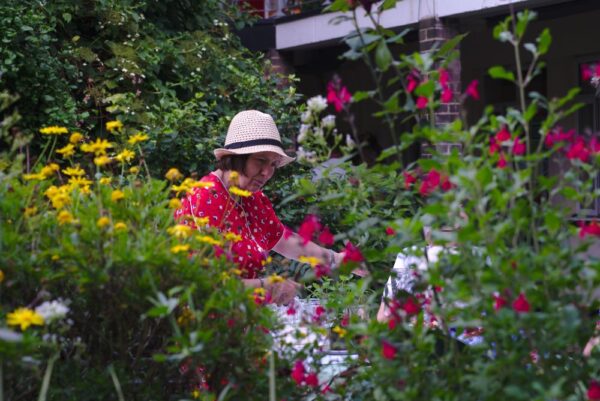
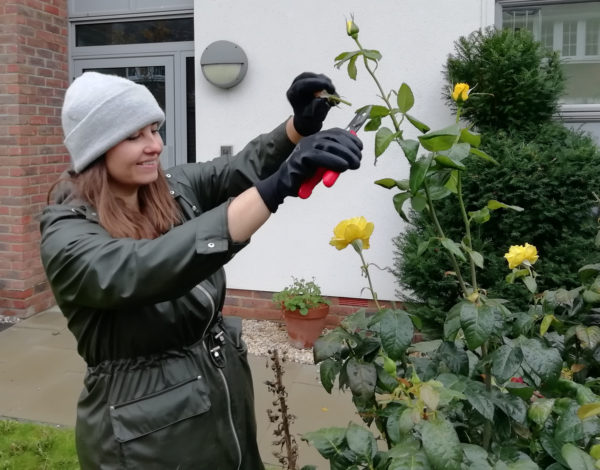 Numerous studies have shown that gardening can be hugely beneficial for both physical and mental wellbeing. It’s a great way to keep fit and active, and can help to reduce sleep problems, stress, anxiety and depression. India says, “There’s a lot of evidence that being able to enjoy green space can help certain health conditions and increase life expectancy. I definitely believe having nature in our lives is good for wellbeing, even if you’re just walking through it, sitting outside or seeing it from your window. And the fact that residents know they can be involved in the space and take part in activities is so good for them.”
Numerous studies have shown that gardening can be hugely beneficial for both physical and mental wellbeing. It’s a great way to keep fit and active, and can help to reduce sleep problems, stress, anxiety and depression. India says, “There’s a lot of evidence that being able to enjoy green space can help certain health conditions and increase life expectancy. I definitely believe having nature in our lives is good for wellbeing, even if you’re just walking through it, sitting outside or seeing it from your window. And the fact that residents know they can be involved in the space and take part in activities is so good for them.”